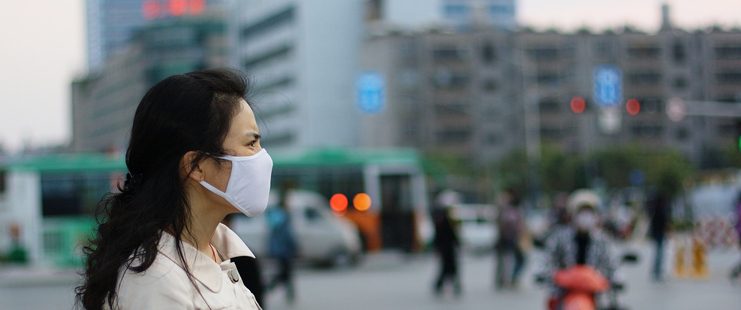Our Opinion: 2020
Will China’s virus outbreak damage the economy?

The rally in Asian stock prices since December came to a halt on 20th January over mounting investor fears that the pneumonia outbreak in Wuhan, China, might turn into a larger epidemic and stunt consumption, travel and tourism-related sectors.The death toll from the coronavirus climbed to at least 80 as the country extended the Lunar New Year holiday in an effort to contain an infection whose spread accelerated around the globe.
The outbreak could pose significant downside risks to Asia’s short-tern economic recovery prospects. The beginning of this year should have marked the turnaround point for GDP and corporate earnings growth in Asia. But the outbreak will take time to contain, which may have a drag on discretionary spending.
However, a strong rebound is likely to follow any dip in economic growth – as was the case during the SARS epidemic in 2003. The economic fallout will probably be less in magnitude than in 2003 when SARS spread across the region, due to the lower mortality rate observed so far. However, the current outbreak may get worse before it gets better and could produce substantial, though temporary, drops in domestic spending. Even in the case of SARS, which lasted eight months, the economic impact was only felt for one quarter. Demand should also recover soon after there is a peak in the number of cases and well before the authorities announce the outbreak is over.
The SARS virus became an international emergency after the Lunar New Year in 2003, even though it had really started in late 2002. China’s GDP growth slowed sharply from over 12% to 3.5%. The impact was particularly harsh on retail sales growth, whilst transport and hospitality sectors also suffered. China’s industrial production, fixed-asset investment and the property sector escaped relatively unscathed.
When outbreaks turn into epidemics, the general pattern is to stop discretionary spending on tourism and dining. Hence, retail sales and visitor arrivals may see steep plunges across the region. Trade, however, tends to be less affected, so the rebound in Asian trade growth driven by tech and the end of tariff hikes should proceed in the background.
Meanwhile, in Hong Kong, private consumption swung negative for four consecutive quarters during the SARS period, with retail sales and visitor arrivals down most in the second quarter of 2003.
In the 2015 case of MERS in South Korea, retail sales and visitors also suffered; real growth halved for a quarter, but stayed positive. The recoveries in both cases were rapid and helped by an upturn in global economic activity.
Asia has seen numerous outbreaks of viruses, with the most serious being SARS in 2002–03, then MERS and several rounds of bird flu. In each case, the key to watch has been how quickly the authorities stop the origination and contain the spread. There are reasons to believe the situation could be better than the market anticipates. Communication is more transparent, healthcare systems are more developed, and individuals and governments are taking more proactive measures.
During the SARS outbreak, Asian equities declined by 12% between late January and late April 2003. It is worth highlighting that sentiment was already depressed during that period due to geopolitical tensions. Cyclicals (e.g., materials, financials and IT) suffered the most, while the healthcare sector and other defensive sectors were relatively more resilient. North Asian markets were heavily affected during this period; Taiwan and Korea led the sell-off, declining by 15%–16%. In contrast, Southeast Asian markets (except for Singapore) were relatively more resilient and outperformed the region by around 9ppt. Subsequently, Asian equities rebounded by 29% in the three months following early signs of containment in late April 2003.
The impact of the Wuhan virus on Hong Kong’s economy and stock market remains to be seen. The obvious difference between SARS and the Wuhan outbreak is that SARS originated from neighbouring Guangdong province, which led to the disease spreading rather severely to Hong Kong. During the SARS correction, property, consumer and gaming stocks saw the largest declines while utilities outperformed. The tourism and consumer-driven sectors will again see the greatest underperformance if the Wuhan pneumonia out-break becomes more severe in Hong Kong.
In China, sectors such as airlines, airports, hotels, leisure and physical retailers tend to benefit from the Lunar New Year due to seasonality, but the situation this year the situation is likely to have been different, as locals choose to stay home because of the Wuhan virus. The healthcare and internet industries, including e-commerce, online video, mobile games and the broader virtual economy, might get an uplift from greater demand from consumers.
So long as the Wuhan pneumonia is contained, it shouldn’t have a lasting impact on the stock market, and there is much to be cautiously optimistic about in China for 2020. The recently-signed US-China Phase 1 trade deal clears the trade-related uncertainty and should support sentiment.
At its current stage, the Wuhan pneumonia will have a limited impact on Japan’s equity market. The TOPIX benchmark didn’t move much on the news of the outbreak. But if it lasts for longer than six months, it might deter visitors during the Tokyo Olympic Games (which start July 2020) and therefore hurt earnings and share prices in the tourism sector. Chinese visitors accounted for 30% of overall visitors to Japan in 2019, the largest of all groups.
When it comes to investing, disease outbreaks, terrorist attacks, and even wars, can largely be placed in the same category: they are disruptive, they are tragic, they have a potentially significant human cost, but they are in the short term usually localised and frequently priced in rapidly.
27th January 2020
